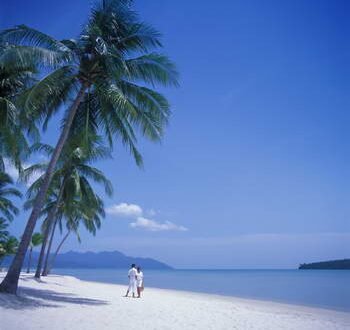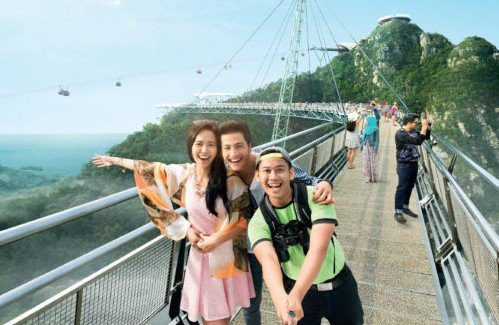
About Malaysia
Even the most jaded visitors will appreciate something from all that we have to offer – from the most luxurious to the most rustic, from the most modern to the most traditional. These characteristics make up Malaysia and its people who are proud to be called Malaysians. Welcome, or Selamat Datang!
States in Malaysia
Malaysia is divided into 13 states: 11 in Peninsular/West Malaysia and Sabah and Sarawak in East Malaysia. The Peninsula is sandwiched between Thailand up north and Singapore in the south, and is a close neighbor to Indonesia, the Philippines and Brunei.
Malaysia’s capital city is the hip and happening Kuala Lumpur. A far cry from its muddy estuary history, KL (as it is commonly known) is a picture of modernity intertwined with a colourful past – the latter frozen in time mainly through many colonial-era architectural structures. A classic example is the gleaming and soaring Petronas Twin Towers – the world’s tallest towers – against perhaps the city’s second most recognisable structures, the Moorish inspired Sultan Abdul Samad courthouse buildings and the old railway station.
South of KL is the country’s administrative capital Putrajaya with buildings that boast modern architectural designs infused with distinct Malaysian and Islamic cultural nuances. It plays host to government ministries, public housing, gardens, lakes and a host of other attractions. It is also a neighbour of the intelligent Cyberjaya, Malaysia’s very own Silicon Valley and the Kuala Lumpur International Airport (KLIA) – locales that form the propeller of Malaysia’s 21st century evolution, the Multimedia Super Corridor (MSC).
Geography
Malaysia lies seven degrees north of the Equator. Peninsular Malaysia is flanked by South China Sea in the east and the historic Straits of Malacca in the west, while East Malaysia is surrounded by South China Sea to the west and north and Sulu Sea in the northeast.
Geographically, the east is made up of narrow coastal plains that rise up to hills and mountains, while the west is wide and fertile. West Malaysia is also suffused with mountain ranges such as Banjaran Titiwangsa, which runs along the north-south spine of Peninsular Malaysia.
Undulating landscapes comprising mountains, rough terrain and rain forest mark East Malaysia’s Sabah and Sarawak, approximately 650km from the Peninsula. As part of the ecologically rich Borneo, these two states are home to some of the world’s most indigenous human, animal and plant groups. Indeed, no visit to Malaysia would be complete without exploring and learning about these groups and indulging in activities such as cave exploring, visiting Orang Utan primate sanctuaries and bird watching.
Climate: Fun, Rain or Shine!
Spanning approximately 330,000 sq km, the country is the epitome of the tropics. Temperatures average between 21° and 27°C. Strongly influenced by the Northeast and Southwest monsoons, the period between late April and late September is usually the driest. The rainy season usually arrives around October and November and can last till February, especially on the east coast and East Malaysia.
However, rain or shine, these weather conditions are relatively docile and would hardly spoil the fun to be had. Nonetheless, just have an umbrella handy. Otherwise, all you need is lots of suntan lotion if you intend to spend most of your time outdoors. Happy trails!
History: A Page from the Past
Malaysia’s historical highlight is the establishment of the Melaka Sultanate in the 13th century. A major port-of-call for traders from the east and west, the state’s strategic location along the bustling Straits of Malacca so intrigued the Chinese, Arabs and Indians that they soon made the port their new point of trade. Even then, the channel was the most ideal location because it was sheltered from strong monsoon winds and could be used all-year round.
In retrospect, the strong trading links with China and India hark back to the first century, BC. Although the earliest known pioneers were the indigenous Orang Asli, early Hindu and Buddhist influences is evident through historical and archaeological findings that are now housed in various museums around the country. They can also be traced to temple sites like Bujang Valley and the Merbok Estuary in northern Malaysia.
Like many Southeast Asian countries, Malaysia had its fair share of conquerors and occupiers throughout its history up to the late 1950s. As early as 1511, the Portuguese – acutely aware of the potential of the Straits of Malacca – sailed into its harbour and were the first to forcibly conquer the land. Their strong influence is evident to this day, as is the Dutch and English effect almost throughout the country.
As the longest rulers, the British consolidated the Malay states in the Peninsula as well as Sabah and Sarawak as the Straits Settlement. After World War II and at the end of the Japanese Occupation in the 1940s, there was a resurgence of Malayan nationalism, and this eventually led to the declaration of Independence from the British Empire in 1957.
The People: The Intricate Malaysian Fabric
Malaysia’s peaceful multi-racial and multi-cultural society is not a dream but a living reality. Malaysians truly live together with acceptance and deference toward each other’s religious background and cultural composition.
The Malays, who form the majority of the population, lead this unique makeup. The second and third largest groups are the Chinese and South Indians respectively. Malaysia also comprises numerous other minority groups such as the Eurasians, North Indians, Sikhs, Peranakans (Straits Chinese) and the Portuguese in West Malaysia, and indigenous groups like the Bidayuh, Iban, Kadazan, Dayak and Melanau in East Malaysia.
Indeed, Malaysians are not only renowned for their hospitality towards tourists but also towards one another. The major religious and cultural celebrations continue to bring about a closeness no other multi-racial country has been able to emulate successfully.
Major festivals celebrated are Hari Raya among the Muslims; Chinese New Year by the Chinese; Deepavali or the Festival of Lights by the Hindus and Christmas by the Christians. What makes these celebrations all the more unique are traditions like ‘open houses’ where friends and neighbours of different ethnicities are invited to each other’s homes to make the celebration all the more meaningful.
Religion and Language: A Unique Spectrum
Islamisation took place in the country as early as the 1400s, thanks in part to the influence of the Arabs and Indian Muslims during the periods they made their way here. Notwithstanding Islam as Malaysia’s official religion, the Constitution guarantees the free practice of religion. The myriad places of worship bear testament to this and it is not uncommon to come across a grand mosque, a Buddhist temple, an Indian temple or a church in the same vicinity.
Although the official language is Bahasa Malaysia (the Malay language), English is widely taught, spoken and written in Malaysia. You need not worry about reading signs or instructions, ordering something from a menu or simply communicating with a local.
In addition, many Malaysians are either bi- or tri-lingual. The most common tongues are the Malay language, Cantonese, Mandarin, Foochow, Hakka, Hokkien or Teochew among the Chinese and Tamil, Malayalam, Punjabi or Hindi among the Indians.
The Government: Democracy in Action
Malaysia practices a constitutional monarchy system, which is headed by the Yang di-Pertuan Agong (His Majesty the King). The King is selected among nine hereditary Malay rulers who each head their own royal state in Peninsular Malaysia. A new King is selected every five years during the Conference of Rulers, and he symbolically rules over the country during his tenure. Malaysia practices a parliamentary democracy headed by a Prime Minister and his cabinet, currently led by the country’s fifth premier, Dato’ Seri Abdullah Ahmad Badawi. The Prime Minister is traditionally elected from among members of the House of Representatives, and is essentially the leader of the political party that wins the majority of seats in the general election.
Like the selection process for the Yang di-Pertuan Agong, a general election is held every four to five years. The Prime Minister and his cabinet of ministers, made up of individuals representing the ruling coalition called Barisan Nasional, or the National Front, governs the country. .
The Economy: Bright and Buoyant
Although still a major player in the agricultural sector with rubber and palm oil cultivation, Malaysia has made considerable strides in the manufacturing and services sectors as well – mainly through the production and export of electronic products and tourism. The country’s major trading partners are Singapore, Japan, the United Kingdom, Germany and the United States.
Malaysia weathered its worst economic recession in the late 1990s only to recover stronger than any other Southeast Asian nation, thanks in part to the efficient policies that were put into motion by the government almost as soon as the downturn hit the region. One controversial but effective policy was the pegging of the Malaysian currency Ringgit Malaysia (RM) against the greenback. Fixed at RM3.80 against US$1, the government intends to maintain the peg indefinitely.
Education: A Proficient Population
Malaysia’s education system is divided into six years of primary, five or six years of secondary and tertiary levels. Children enrol in Primary One at the age of seven and join secondary school at 13. The medium of instruction is mostly in Bahasa Malaysia except for mathematics and science, which are taught in English. Indeed, proficiency in English has been given greater emphasis in recent years. Other than their mother tongue and the national language, Malaysians are actively encouraged to read, write and speak English from a very young age.
Tertiary education is important to Malaysia’s future growth and there is no shortage of local and foreign colleges and universities scattered across the country. From pre-university to diploma to degree courses, Malaysia has carved a name for itself as a formidable education destination among foreign students as well. A number of these prestigious foreign institutions offer full-time local and twinning programmes. Among the most established local institutes of higher learning are University Malaya (UM), International Islamic University Malaysia (IIUM) and Universiti Kebangsaan Malaysia (National University of Malaysia).




